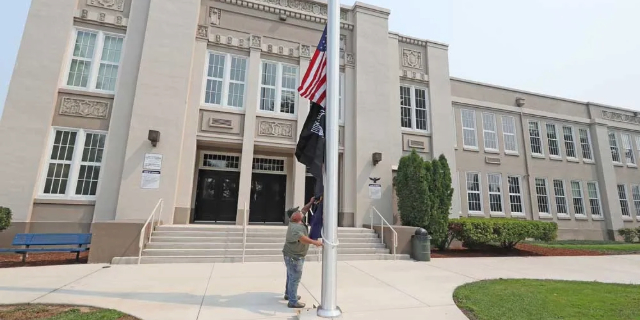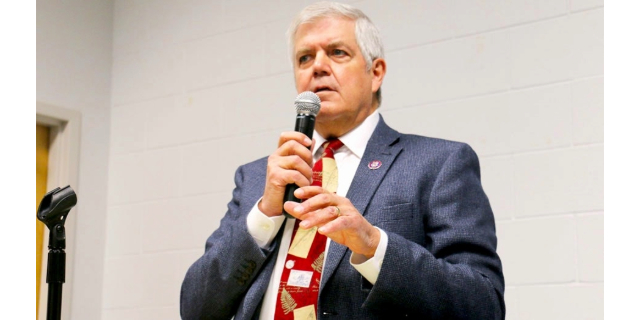Wildlife crossings being proposed for Wallowa County highway
Published 5:00 am Thursday, December 19, 2024

- A cow elk grazes the Minam River upland area. The area, which Highway 82 bisects, has a high rate of vehicle-wildlife collisions.
ENTERPRISE — In a recent 15-year span, vehicles struck elk and deer more than 900 times on a single short stretch of road in Wallowa County.
According to the figures the Oregon Department of Transportation recorded from 2009-23, that makes Highway 82 between mileposts 42 and 64 the most dangerous piece of road for wildlife in the state.
And they are almost certainly on the low side of reality.
“The actual number is likely much higher, since some animals die outside the highway right-of-way,” James Akenson, conservation director for the Oregon Hunters Association, told the Wallowa County Board of Commissioners on Dec. 4.
While no human fatalities resulted from those crashes, 14 people were injured, according to ODOT data.
The good news is efforts are underway to do something about the problem.
Akenson told the commissioners ODOT plans to build at least three wildlife crossings for the 22-mile stretch of Highway 82 that runs from Wallowa to just west of Enterprise.
The proposed crossings are just west of Wallowa, near a bridge just west of Lostine and near some railroad tracks between Lostine and Enterprise.
The study
The Oregon Wildlife Foundation, a principal financial supporter of the project, said in a press release the coalition behind this effort includes local organizations and state and federal agencies all focused on reducing wildlife-vehicle collisions along Highway 82.
The foundation held a press conference online on Sept. 18 to discuss wildlife crossings and the process through which they’d be built. The three phases of the projects are:
• Phase 1: Mitigation analysis/conceptual design.
• Phase 2: Engineering design.
• Phase 3: Construction.
Funding
“The coalition has raised the funding needed to hire a contractor team that will conduct a wildlife crossing mitigation analysis and develop conceptual designs for wildlife crossing structures at up to 10 preferred locations within this corridor,” said Tim Greseth, the Oregon Wildlife Foundation’s executive director.
Akenson told the Wallowa County commissioners he wasn’t at the meeting to ask for anything, such as funding or conditional use permits, as the coalition is in the early planning stages and the wildlife foundation is paying for a feasibility study. Several weeks ago, contractors and representatives of government agencies involved in the projects conducted a field trip to look at potential sites.
“At this time, while we’re doing the assessment and feasibility study,” Akenson said.
So far, funding is largely coming from the Oregon Department of Transportation and from the Oregon Department of Fish and Wildlife’s conservation fund.
But the cost of the actual crossings “is yet to be determined,” Akenson said.
Crossings
Wildlife crossings generally come in two styles — underpasses and overpasses. The less expensive underpasses usually take the form of culverts through which deer and elk are funneled using fences and some sort of attractant, such as food or salt.
Over time, wildlife populations grow accustomed to using those routes when they need to cross the highway.
“That’ll be passed on through the generations,” Akenson said.
He said the underpasses, which often are designed to make use of existing structures, usually cost in the “tens of thousands,” while the overpasses — usually over interstates — cost in the millions. The latter often rely on federal funding, he said.
The state and donor groups such as the hunters association likely would pick up the tab for the underpasses.
Commissioners Todd Nash and John Hillock expressed concern the crossings could attract their cattle, but Akenson said the type of fencing used can address that problem.
“Deer can slip through a lot of fences that cows can’t,” he said. “It’s fairly simple. I think it’s certainly achievable.”
He said similar wildlife passages have been installed along Highway 97 south of Bend, which also had a high rate of deer mortality.
“On Highway 97 south of Bend, mortalities have really gone down since they’ve put in crossings,” he said, adding the collision rate there has decreased 90%.
Other means and areas
Akenson said placing signs and flashing lights to alert drivers of the potential of wildlife crossings/collisions are largely ineffective. Motorists will weigh their need to get where they’re going against the likelihood of seeing an elk or deer and often run the risk of collision.
Other areas in Wallowa County are being considered as well, Akenson said. Highway 82 from Enterprise to Joseph likely will be included in the study. He acknowledged the need for crossings on Highway 3 north of Enterprise and on Highway 350 to Imnaha, but they’re not yet included in any studies.
“Right now, the focus is on Wallowa to Enterprise,” he said. The other areas are “not in our focal area at this time.”
Akenson said he expects to have the feasibility study done within a year and hopes to meet with the commissioners again in mid-2025.
To learn more about plans for wildife crossings in Wallowa County, contact Jim Akenson of the Oregon Hunters Association by phone at 541-398-2636 or by email at jim@oregonhunters.org.







